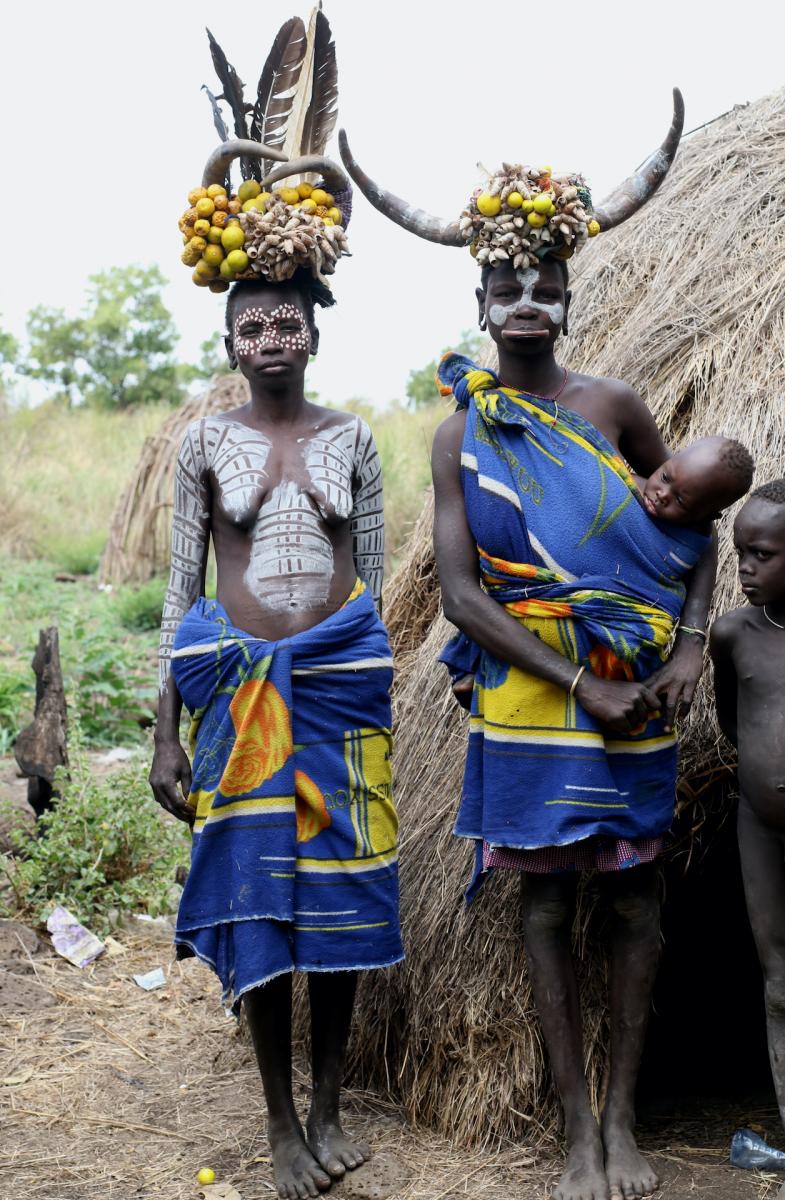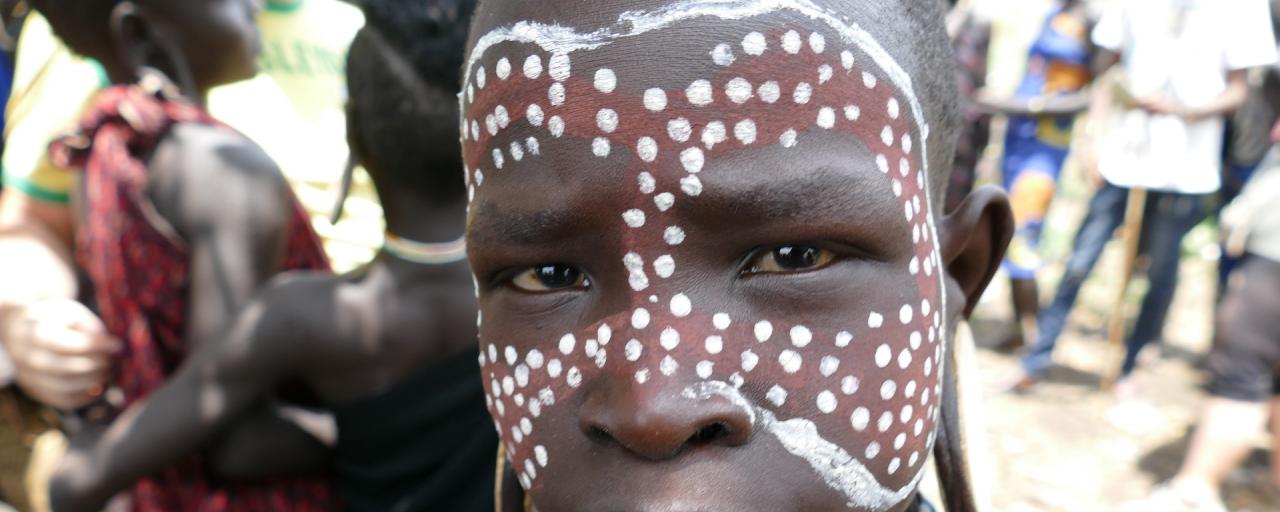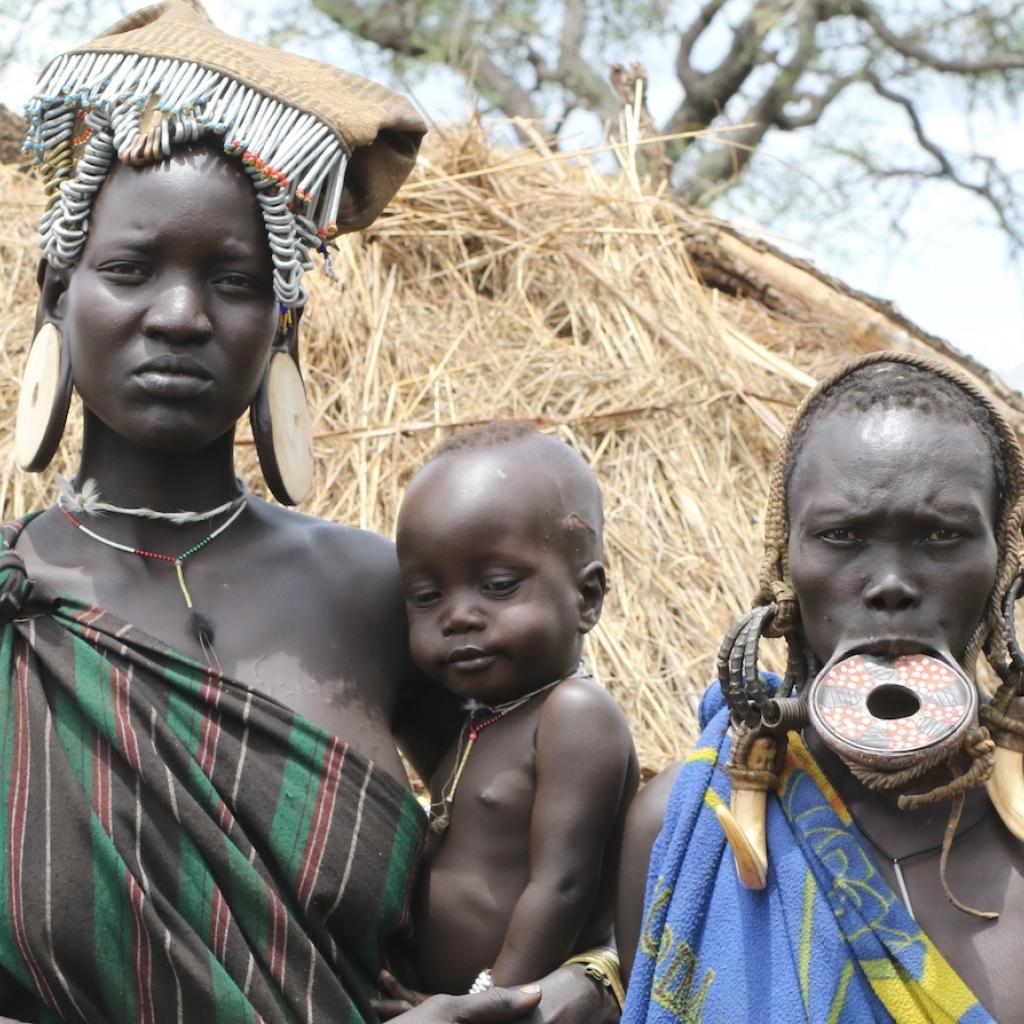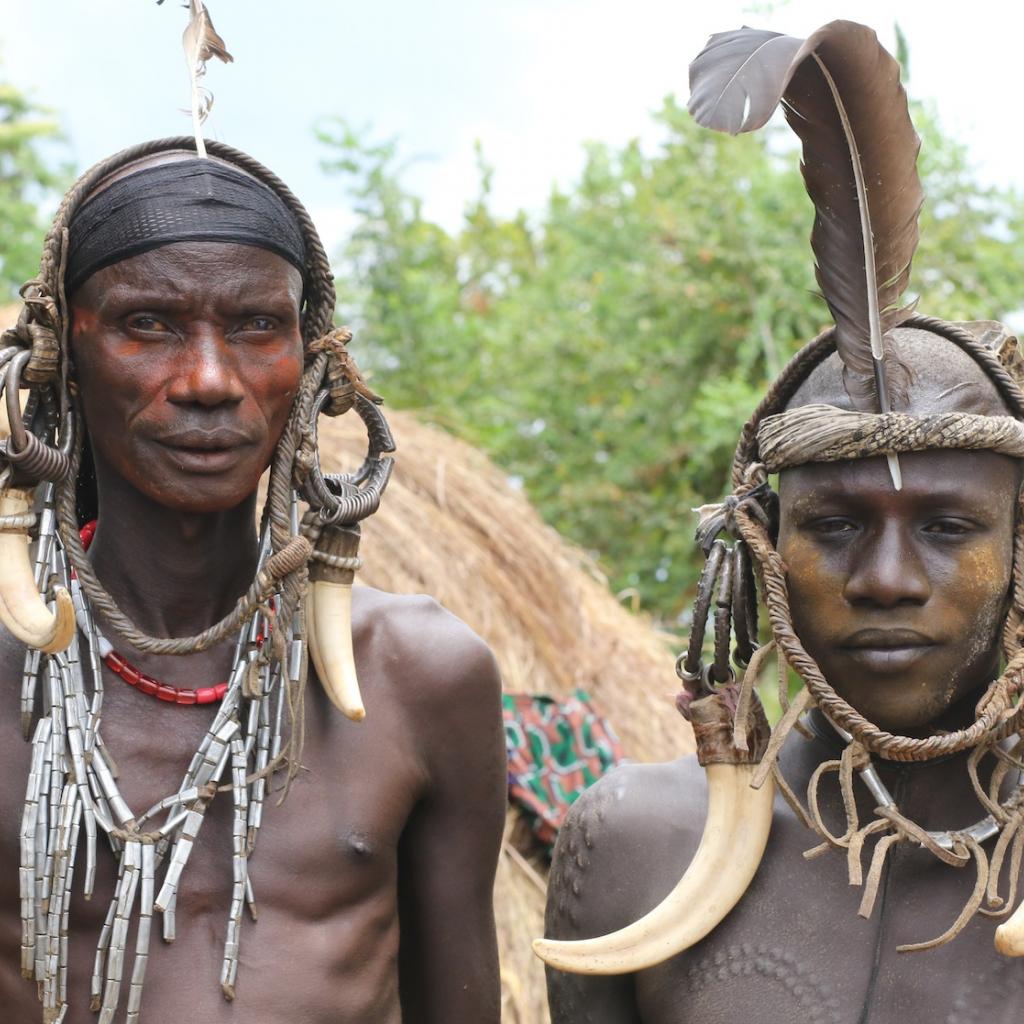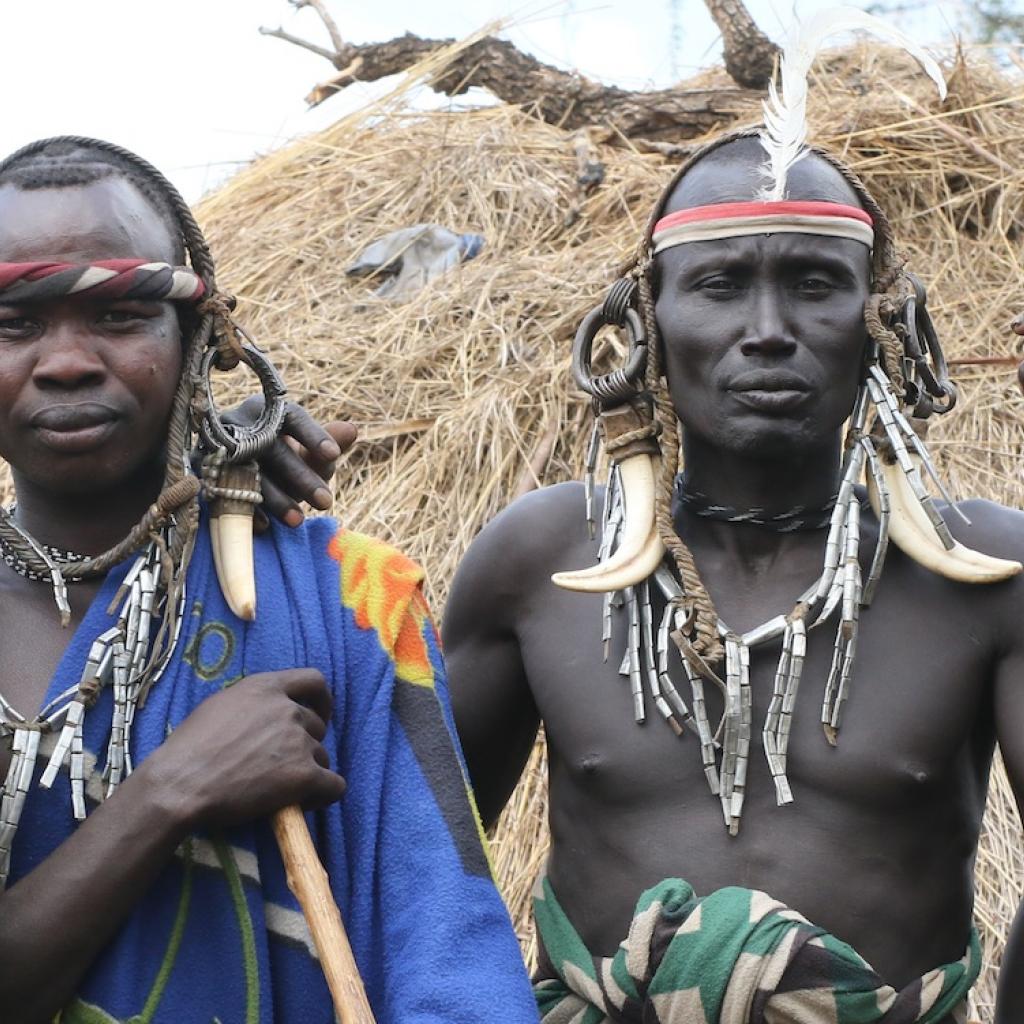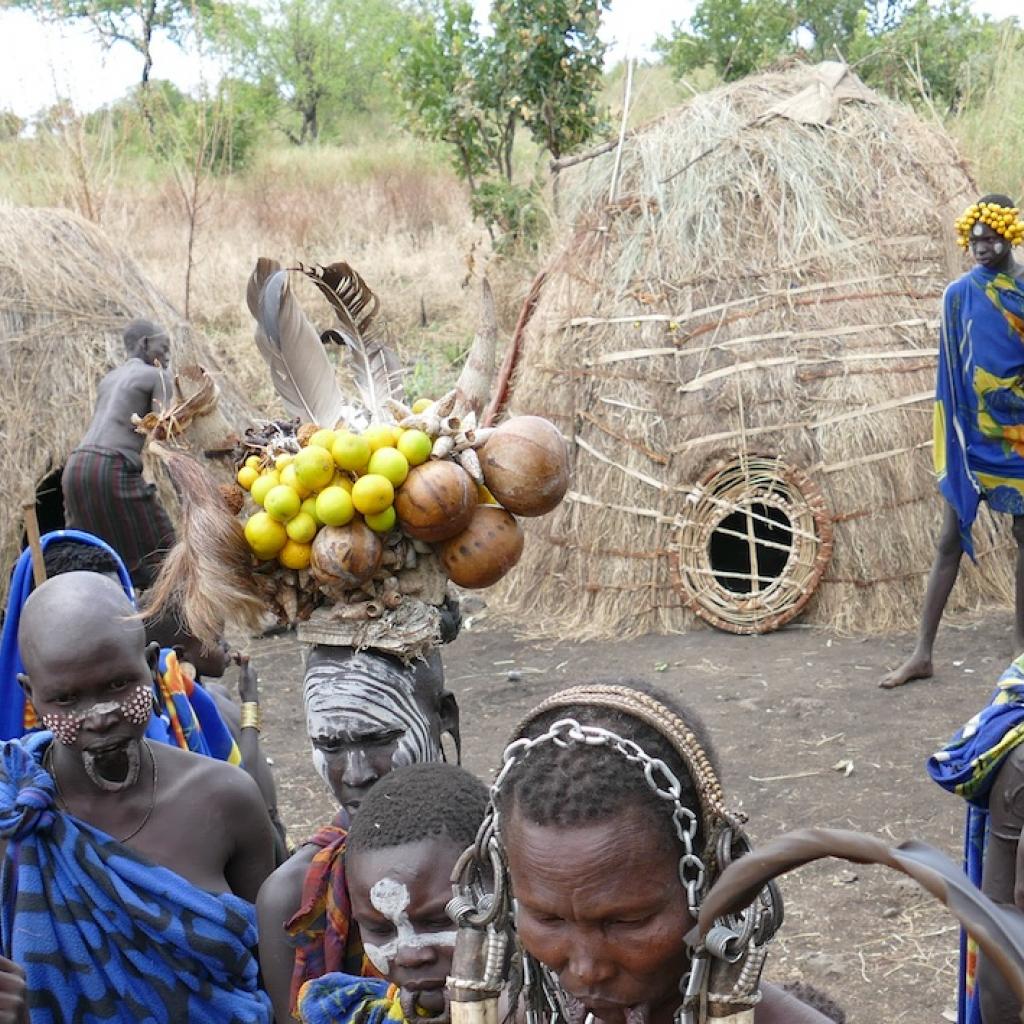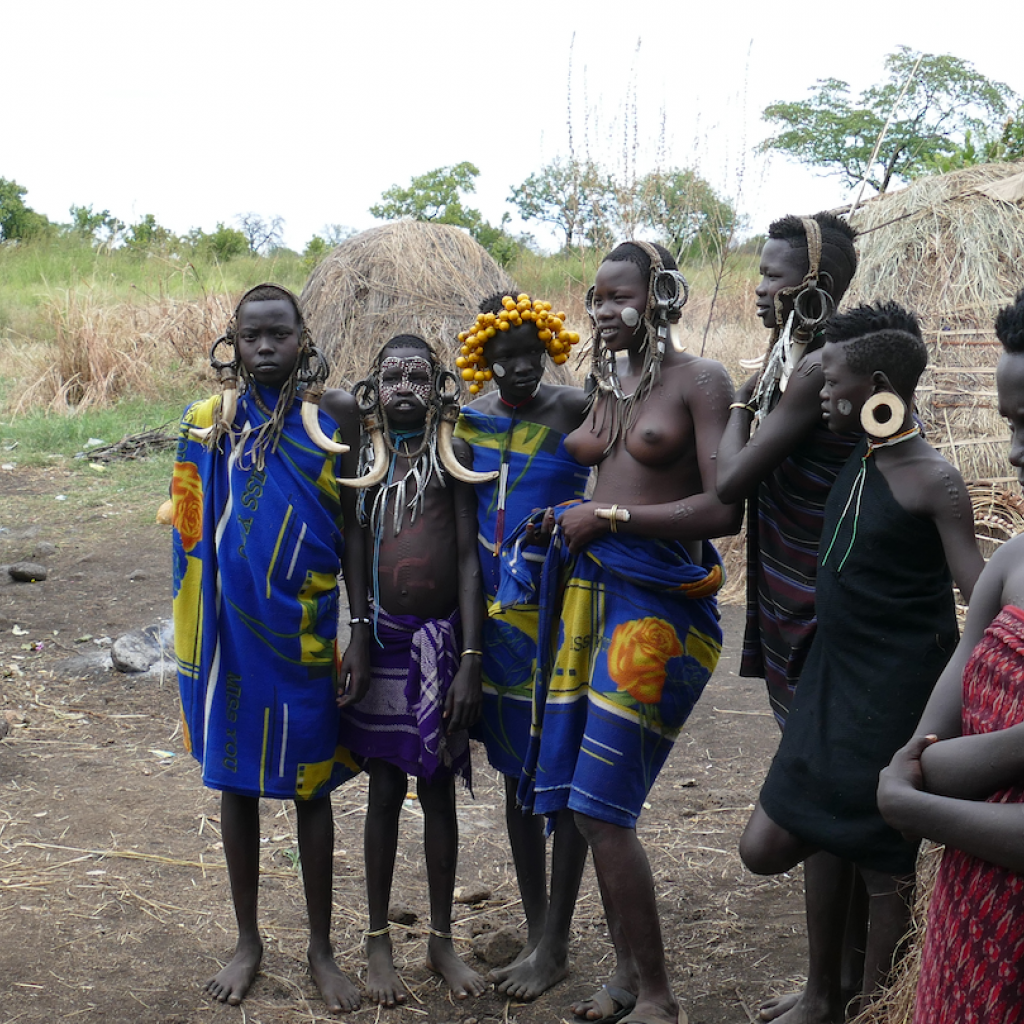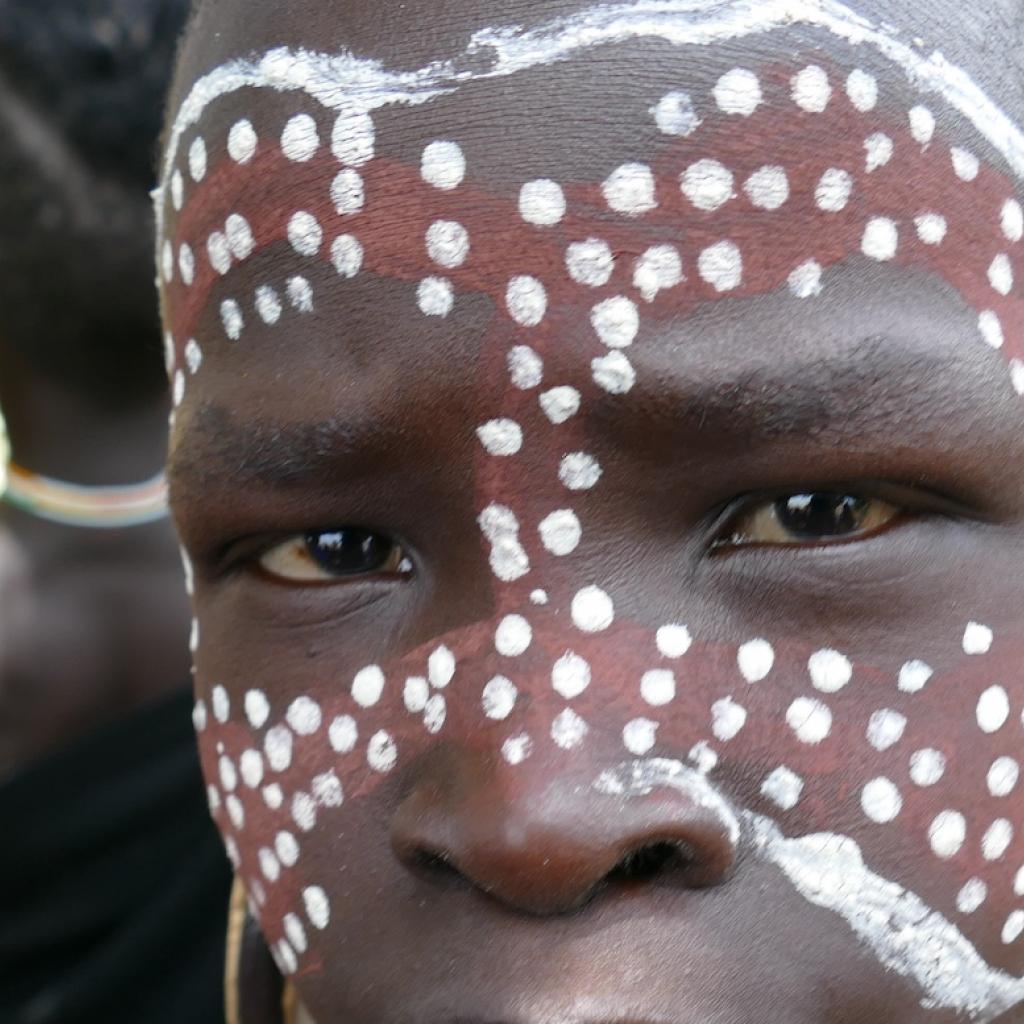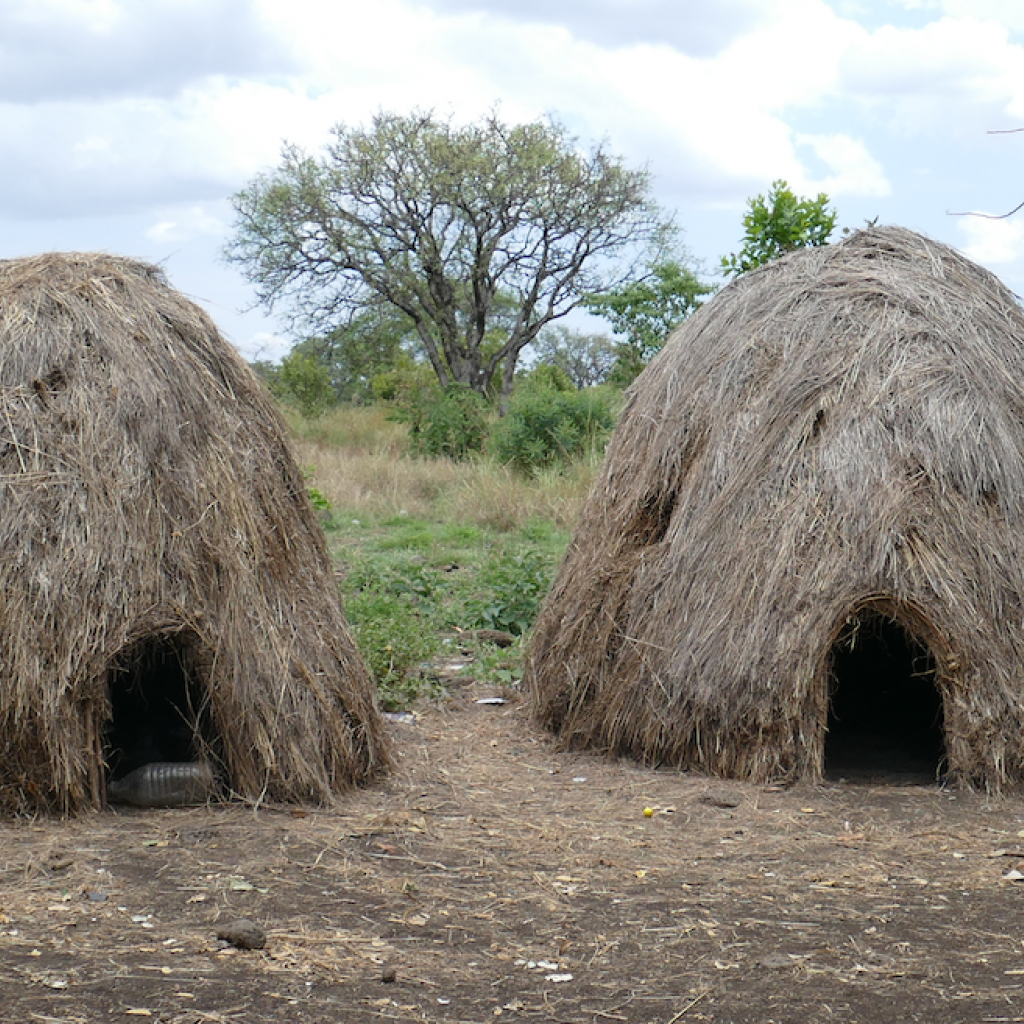The Mursi, a tribe from the Omo Valley, in Ethiopia, practice an animist religion that arises from the observation of nature and the phenomena they experience.
For the Mursi religion and healing are two interconnected concepts; they believe that the disease derives from a disturbance in the relationship between people and their natural and social environment.
The Mursi believe that there is a higher force, Tumwi, a deity living in the sky, who sometimes manifests himself as a phenomenon of the sky: a rainbow, a bird or other.
In the religious and ritual practices of the Mursi there are two important figures and each of them has a very specific and defined role.
The religious and ritual figures of the Mursi are:
• The Komoru: the Priest
• The Ngerre: the female healer or sorcerer
The Komoru, the priest in the Mursi religion and his rituals
The Komoru is a very important figure, not only from a religious and ceremonial point of view, but also in the social organization of the Mursi; the Komoru is similar to a priest and the link between the divinity Tumwi and individuals.
The Komoru performs rituals for the community and intercedes with the divinity for the collective well-being, he never performs rituals for an individual; the rituals by the Komoru are celebrated especially in times of difficulty, for example during famines, periods of drought or in the presence of diseases of livestock or people.
One of the most important rituals celebrated by the Komoru is the Bio Lama, this is the only ritual that people can attend, who usually gather together with their livestock in large numbers.
During the Bio Lama ritual the well-being of the community is asked by the Komoru, the health of livestock and men, the fertility of the land to be cultivated and rain is requested.
Some guys have to go to designated places to get some colored clay types and to cut some leafy branches of certain tree species.
The clays will then be mixed with water and will be used to smear those taking part in the ceremony, while the leaves and branches will be placed on the fire, in this way the smoke will attract the attention of Tumwi.
Some men of the Bara age class build a circle of stones near the priest's hut and light a fire inside the circle.
The Bio Lama ritual lasts a total of four days during which some head of cattle are sacrificed and chosen according to the color of their coat, that must be the same as that of the priestly family.
When the Bio Lama is celebrated, the Mursi say "the earth is healed, or it is alive, and by taking care of the earth all problems have been eliminated".
The Komoru decides the moment in which to celebrate the Bio Lama based on the phases of the moon; if it rains during or shortly after the celebration of the ritual, the community has tangible proof of the powers of the Komoru.
Although the celebration of the Bio Lama falls within the duties of the Komoru, it is possible that this ritual is also celebrated by a member of the priestly family.
The Ngerre, the female healer in the Mursi religion and her rituals
The Mursi believe in the power of female healers, who are called Ngerre; they are similar to sorcerers who perform rituals to heal those who are affected by diseases attributable to Tumwi; in this they differ from the Nani who are instead healers more similar to doctors and surgeons.
Tumwi manifests to the healer and she interprets the signals to heal people; unlike the Komoru, the Ngerre performs rituals for individuals based on a specific problem or disease and not for the community.
The main tool used by Ngerre to perform her rituals is clay, or rather the various types of clay that have different colors.
Those who are suffering from a disease, from which they are unable to heal otherwise, turn to the Ngerre who will practice a religious ritual to heal them.
The ritual, that allows the Ngerre to identify the disease, is called leto: the Ngerre sits astride a patient and passes her hands on his bare back, while making this gesture she emits a sound similar to "shh shh shh"; by doing this the healer extracts the disease from the patient's body.
She then joins her hands, this gesture means that she has grasped the disease, sometimess he smells the disease that she has extracted by bringing a closed fist to her nose; finally she puts the disease she has extracted on a pile of earth that is nearby and you hear the sound of her hands touching the earth “pat, pat, pat”.
The Ngerre is helped by her Kule to identify the disease and to heal the patient; the Kule is described as a being who lives in the healer's head and is asleep, so it must be awakened, banawe, by the Ngerre.
To wake up the Kule, the Ngerre washes her armpits with coffee or beer or with red clay, or with green clay, chagi.
Often the healer receives beer, porridge, coffee, goats or money as payment, tomoga, for her services; however, the Ngerre must share what she receives in payment with the spirit of one of her ancestors, menenga, then she throws a part of what she has received on the ground, at which point another Ngerre will rub herself on her forehead, under her armpits and on her stomach what thrown to the ground.
Usually every healer specializes in some diseases, some Ngerre are able to cure curses, bhusoy, there are different types of curses: rhyme, kalawari, keno and menenga; other Ngerre instead are specialized in treating diseases that have an environmental cause, muttan, others in diseases that come directly from Tumwi, kidho.
The importance of clay, ash and dung in rituals and ceremonies
Clay, ash and dung are all substances that are used by the Ngerre to absorb and disperse the malevolent forces that have accumulated in a body; they are also used in rituals to protect people, both from the Ngerre and from individuals, from everything that causes disease, or Kido.
Elements such as ash and clay are also used to protect from spirits.
A Mursi returning from a long journey usually anoint the foreheads of relatives and his own with ashes; this gesture serves to prevent the malevolent spirits of dead ancestors, menenga, from affecting loved ones.
It is not important that the ash is visible on the forehead, what is important it is the act of anointing, of touching the forehead; among the Nuer there is a similar ritual practice that is also used as a good omen.
For the Nuer and the Mursi this gesture of marking oneself with ashes is as if it creates a sort of solidarity and identification among the people of a community; this shows how much earthly substances are central in daily practices.
Clay in particular is considered so important in rituals and healing practices that some clay pits are considered sacred and, for this reason, are kept hidden; only the keepers, e'wu, can go there.
The Mursi believe that clay can recognize itself, a clay well is able to recognize the clay that comes from that well; this is emblematic of the interaction between men and the earth, a relationship that is the foundation of diseases and healing processes.
When a Mursi passes by a clay pit or a clayey outcrop, he cannot help but sprinkle this substance on his skin; it is as if it embodies the sacred place and cancels the boundary between man and the earth.
Clay plays a central role in the collective healing ceremony called Zuo Lama, or rounding of the population, or Bio Lama, rounding of cattle; for this ritual, gray or brown clay, dhebi-a-gidanga is used, that is said to protect the anointed from diseases.
The Mursi believe that applying this gidanga clay, that is dirty or contaminated, to the skin scares existing diseases or prevents them from affecting anointed people; during the ritual the clay is applied to all members of the community for three days, both in the morning and in the evening, while on the fourth day the entire community washes their bodies, tonyo, sprinkled with white clay.
With this ceremony, both preventive and curative, healthy people strengthen their vitality as any disease is carried away from the community, or is carried "downstream" or "underground".
This ritual is performed by the Komoru or by a member of the priestly family; he will not wash himself with water for the duration of the ritual.
The Mursi consider as dangerous places where water is, they consider them places of contamination and spread of infections that spread for example through open wounds and fresh blood; while clay, dung, earth in general and ash are considered elements capable of absorbing and cleaning.
There are times and situations in which contact or proximity with water must be avoided as it is considered dangerous; the Omo River and its waters are considered on the one hand to bring life but also a vector of infections, diseases and epidemics, both for humans and for livestock.
For example, if a person who has eaten meat has to go to the river to get water, he will first have to protect himself by putting dung and ash around his mouth; in this way he does not risk being hit by Kido, as it is believed that Kido is no longer able to smell the meat coming from his mouth.
Sometimes the Komoru practice rituals to cleanse the Omo River of diseases and predators, such as crocodiles; the ritual requires that the clay be thrown into the water together with the feces of hyenas, lions or leopards.
